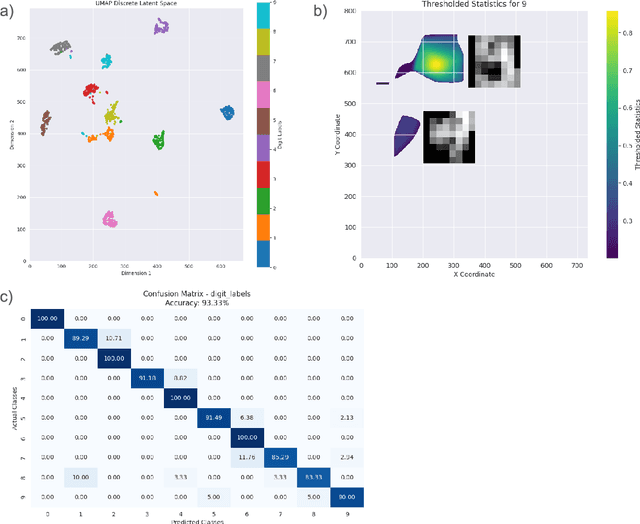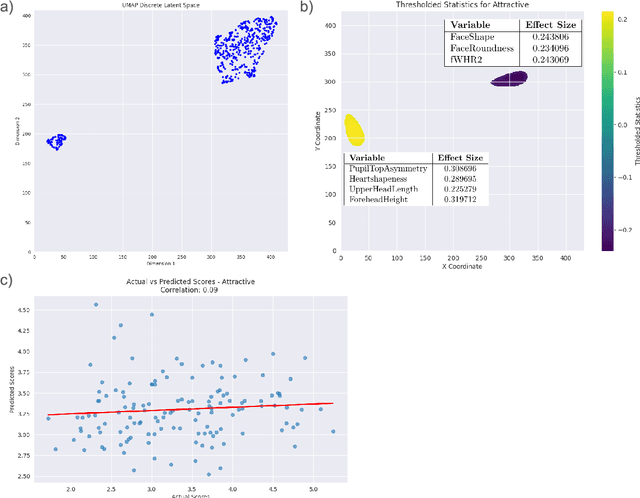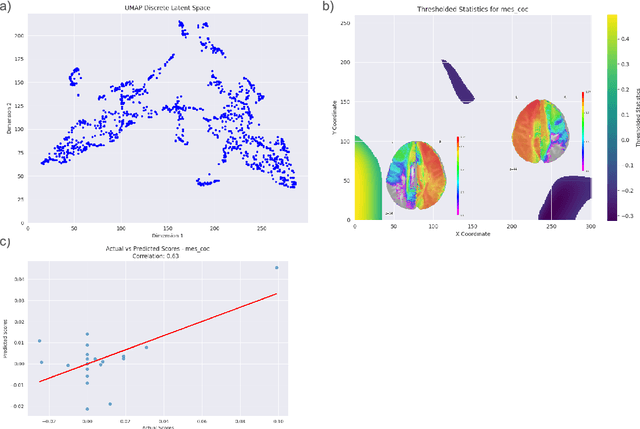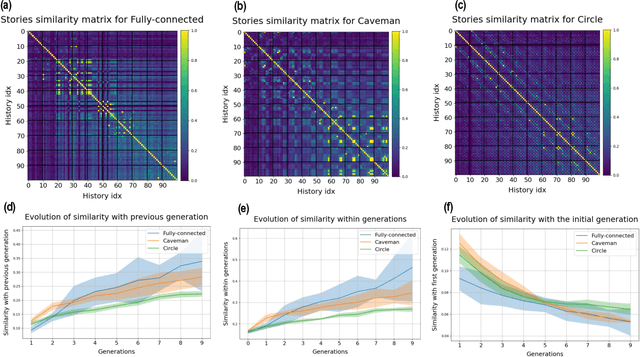Chris Foulon
Generalizable automated ischaemic stroke lesion segmentation with vision transformers
Feb 10, 2025Abstract:Ischaemic stroke, a leading cause of death and disability, critically relies on neuroimaging for characterising the anatomical pattern of injury. Diffusion-weighted imaging (DWI) provides the highest expressivity in ischemic stroke but poses substantial challenges for automated lesion segmentation: susceptibility artefacts, morphological heterogeneity, age-related comorbidities, time-dependent signal dynamics, instrumental variability, and limited labelled data. Current U-Net-based models therefore underperform, a problem accentuated by inadequate evaluation metrics that focus on mean performance, neglecting anatomical, subpopulation, and acquisition-dependent variability. Here, we present a high-performance DWI lesion segmentation tool addressing these challenges through optimized vision transformer-based architectures, integration of 3563 annotated lesions from multi-site data, and algorithmic enhancements, achieving state-of-the-art results. We further propose a novel evaluative framework assessing model fidelity, equity (across demographics and lesion subtypes), anatomical precision, and robustness to instrumental variability, promoting clinical and research utility. This work advances stroke imaging by reconciling model expressivity with domain-specific challenges and redefining performance benchmarks to prioritize equity and generalizability, critical for personalized medicine and mechanistic research.
Emerging-properties Mapping Using Spatial Embedding Statistics: EMUSES
Jun 20, 2024


Abstract:Understanding complex phenomena often requires analyzing high-dimensional data to uncover emergent properties that arise from multifactorial interactions. Here, we present EMUSES (Emerging-properties Mapping Using Spatial Embedding Statistics), an innovative approach employing Uniform Manifold Approximation and Projection (UMAP) to create high-dimensional embeddings that reveal latent structures within data. EMUSES facilitates the exploration and prediction of emergent properties by statistically analyzing these latent spaces. Using three distinct datasets--a handwritten digits dataset from the National Institute of Standards and Technology (NIST, E. Alpaydin, 1998), the Chicago Face Database (Ma et al., 2015), and brain disconnection data post-stroke (Talozzi et al., 2023)--we demonstrate EMUSES' effectiveness in detecting and interpreting emergent properties. Our method not only predicts outcomes with high accuracy but also provides clear visualizations and statistical insights into the underlying interactions within the data. By bridging the gap between predictive accuracy and interpretability, EMUSES offers researchers a powerful tool to understand the multifactorial origins of complex phenomena.
Cultural evolution in populations of Large Language Models
Mar 13, 2024



Abstract:Research in cultural evolution aims at providing causal explanations for the change of culture over time. Over the past decades, this field has generated an important body of knowledge, using experimental, historical, and computational methods. While computational models have been very successful at generating testable hypotheses about the effects of several factors, such as population structure or transmission biases, some phenomena have so far been more complex to capture using agent-based and formal models. This is in particular the case for the effect of the transformations of social information induced by evolved cognitive mechanisms. We here propose that leveraging the capacity of Large Language Models (LLMs) to mimic human behavior may be fruitful to address this gap. On top of being an useful approximation of human cultural dynamics, multi-agents models featuring generative agents are also important to study for their own sake. Indeed, as artificial agents are bound to participate more and more to the evolution of culture, it is crucial to better understand the dynamics of machine-generated cultural evolution. We here present a framework for simulating cultural evolution in populations of LLMs, allowing the manipulation of variables known to be important in cultural evolution, such as network structure, personality, and the way social information is aggregated and transformed. The software we developed for conducting these simulations is open-source and features an intuitive user-interface, which we hope will help to build bridges between the fields of cultural evolution and generative artificial intelligence.
Deep Variational Lesion-Deficit Mapping
May 27, 2023Abstract:Causal mapping of the functional organisation of the human brain requires evidence of \textit{necessity} available at adequate scale only from pathological lesions of natural origin. This demands inferential models with sufficient flexibility to capture both the observable distribution of pathological damage and the unobserved distribution of the neural substrate. Current model frameworks -- both mass-univariate and multivariate -- either ignore distributed lesion-deficit relations or do not model them explicitly, relying on featurization incidental to a predictive task. Here we initiate the application of deep generative neural network architectures to the task of lesion-deficit inference, formulating it as the estimation of an expressive hierarchical model of the joint lesion and deficit distributions conditioned on a latent neural substrate. We implement such deep lesion deficit inference with variational convolutional volumetric auto-encoders. We introduce a comprehensive framework for lesion-deficit model comparison, incorporating diverse candidate substrates, forms of substrate interactions, sample sizes, noise corruption, and population heterogeneity. Drawing on 5500 volume images of ischaemic stroke, we show that our model outperforms established methods by a substantial margin across all simulation scenarios, including comparatively small-scale and noisy data regimes. Our analysis justifies the widespread adoption of this approach, for which we provide an open source implementation: https://github.com/guilherme-pombo/vae_lesion_deficit
 Add to Chrome
Add to Chrome Add to Firefox
Add to Firefox Add to Edge
Add to Edge